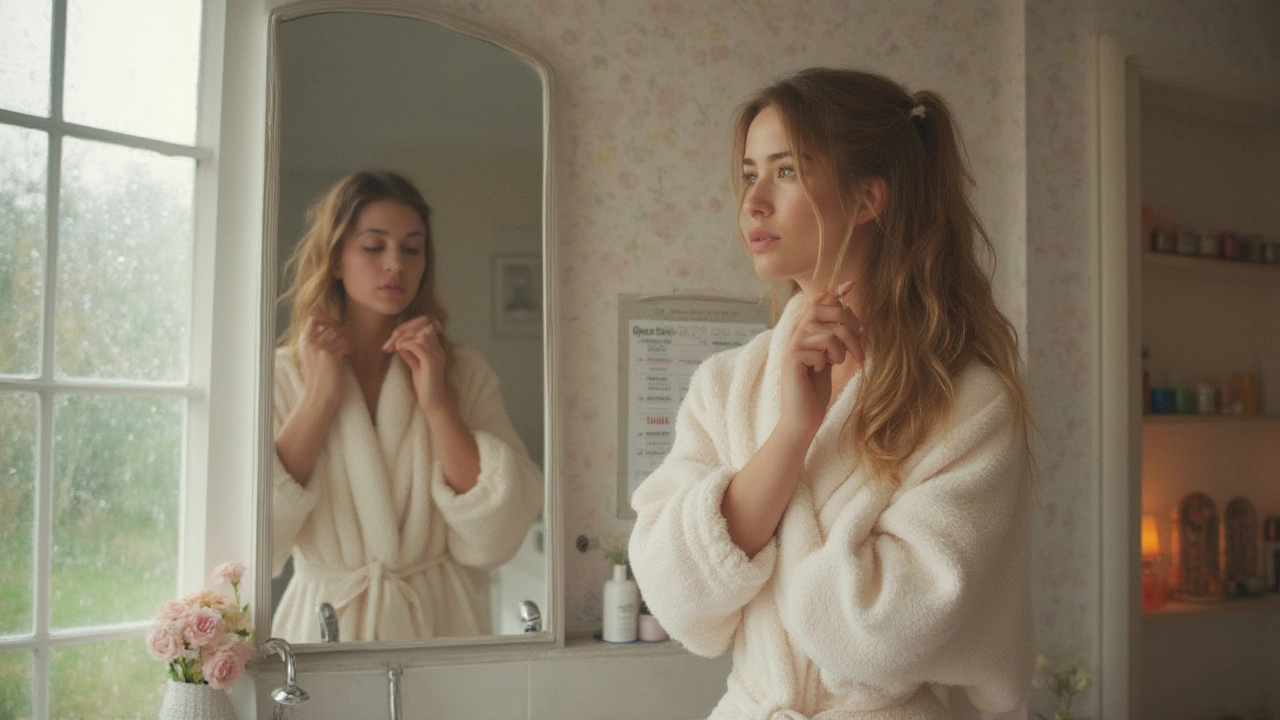So, imagine waking up late, hair sticking up like a porcupine, but you’re not stressing—you trained your hair to behave, no shampoo in sight. Sounds fake, right? But "hair training" isn't some TikTok myth. It’s a trend that’s quietly survived decades, sparking debates in salons and on Instagram. People swear they wash their hair less and it magically gets less greasy, more shiny, and apparently easier to manage. Here’s the kicker: while some friends find their goldilocks routine right away, others spend months with greasy roots. What’s the real timeline for hair training? And does it actually work for most people?
What Is Hair Training—and Why Are So Many Doing It?
Hair training is the practice of extending the time between hair washes. Instead of shampooing daily or every other day, you stretch it to maybe every three, four, seven days or even longer. Think of it like training your scalp to stop pumping out so much oil because it isn’t being stripped every time you shower. If you’ve read stories about people shampooing once a week, they’re likely hair training veterans. Origin stories? Hippies in the '70s pushed the "no-poo" method, but fast-forward to 2025, and it’s hit the mainstream—YouTubers, TikTokers, and, believe it or not, even some barbers are talking about it.
The science? Your scalp naturally produces sebum (oil) to protect hair. When you wash frequently, especially with harsh shampoos, your scalp sometimes overcompensates by producing even more oil. That’s why you can end up trapped in that grease-wash cycle. Hair training fans say you can break that loop by shampooing less, eventually teaching your scalp to chill out and not go into overdrive. But it isn’t instant. Your lifestyle, hair type, routine, climate—these things all matter.
Granted, hair training is not a magic fix for everyone. It works best on hair types that aren’t super dry or super fine. People with thick, wavy, or curly hair usually see results faster because the natural oils have to travel further down the hair shaft, spreading more evenly. On the other hand, those with straight or very fine hair often feel every bit of oil, so the early stages feel greasier. But the real reason people stick with it? They get more time back, less money on shampoo, and—if the hundreds of before/after posts are believed—a natural, glossy look.
Here’s a wild fact: according to a 2024 survey by the British Association of Dermatologists, around 62% of people aged 18-35 have tried some form of hair training or "no-poo" routine in the past two years. That’s a lot of folks skipping the bottle. But everyone’s timeline and experience is different—and that’s what brings us to the big question: how long does it actually take?

How Long Does Hair Training Take? Timelines, Stages, and What to Expect
This is where the road gets bumpy. Type "how long does hair training take" into Google and you’ll get answers ranging from "a couple weeks" to "over a year." But the truth rests somewhere in between, depending on, well, you. The best way to break it down is by hair type, current habits, and what you want from your routine. Here’s a rough timeline—
| Stage | Timeframe | What Happens |
|---|---|---|
| Shock Phase | Week 1–2 | Scalp overproduces oil, hair feels greasier, possible itchiness, you’ll want to wash daily (fight the urge!) |
| Adjustment Phase | Week 3–5 | Oil production starts to level out, might notice itchy scalp or flakiness (it’s normal!), dry shampoo is your best mate |
| Balancing Out | Week 6–8 | Hair looks less oily, can sometimes stretch wash days to four or more, scalp feels more "normal" |
| Stable Phase | Month 3–6 | Oil production matches your routine, you might reach your target (washing every 4–7 days) |
| Long-Term Results | Month 6+ | Hair usually settles into its sweet spot, results stick as long as you keep up the habit |
Most people see real changes around the two-month mark. If you’ve got thick or curly hair, you’ll probably get there faster. Fine-haired folks might need three or even six months to find their groove—and honestly, some never get fully comfortable going weeks between washes. And if you’re bleaching, coloring, or using lots of styling products, it complicates things. Build-up can force you to wash sooner, unless you love looking like an artsy sculpture.
The hardest part is the first three weeks. This is where many people bail out. The hair feels heavy, maybe kind of itchy, and you might worry others notice the grease. Here’s something nobody tells you: this is 100% normal. Dermatologists back this up, too. In a 2023 study done at UCL, nearly 80% of participants reported awkward greasiness during the first two weeks, but by the eighth week over 65% said they no longer felt self-conscious or uncomfortable. So stick with it.
What helps during these weeks? Dry shampoo (life saver), loose hairstyles, scarves, hats, and sometimes strategic rinses. Some even use a bit of cornstarch or cocoa powder as a quick fix for roots—if you’re as pale as me, go cornstarch; if you’ve got darker hair, cocoa blends better. But be strategic. Too much product defeats the purpose and can block pores. Try a boar bristle brush, too—it spreads natural oils down the hair.
After a couple months, folks usually notice some pleasant side effects: less frizz, a natural shine, and easier detangling. Personally, my wife Fiona made it through about eight weeks before she could comfortably stretch washes to once every six days. She swears her wavy hair has never felt softer, so there’s hope even if the greasy stage feels never-ending.

Making Hair Training Work: Do’s, Don’ts, and Unexpected Wins
Thinking of giving hair training a real shot? Small tweaks turn the ordeal into a win:
- Start slow. Don’t suddenly jump from daily washes to once a week. Go every other day, then every third, and so on. Listen to your scalp.
- Choose the right shampoo. When you do wash, opt for gentle, sulfate-free shampoos. They clean without totally stripping oils. Clarifying shampoos once a month help bust build-up.
- Dry shampoo is a game-changer but don’t use it every day—aim for just on "crisis" days. Too much can clog up your hair follicles and cause scalp issues.
- Don’t be afraid to rinse with just water between washes, especially after a sweaty workout. A quick rinse helps with salt and dust without disrupting your progress.
- If you use lots of styling products, be honest: you’ll need to clarify more often to remove build-up. Try to keep product use to a minimum while you adjust.
- Brush, but don’t overdo it. Brushes (especially boar bristle) help move oil away from your scalp. But pulling or scratching can irritate things.
Notice something weird after a couple months? Maybe your scalp feels healthier, or you’re saving cash. Recent numbers show the average Brit spends nearly £120 a year on hair cleaning products. Train your hair, and yes—over time, you might cut that number in half. Not to mention, you get back hours weekly that used to be spent shampooing, blowing out, and styling.
If you’re somewhere hot and humid, or prone to sweating, you might struggle more. That’s not you failing—that’s just climate. The same goes for folks with hormonal imbalances or scalp conditions; don’t push hair training here unless your doctor or dermatologist gives it the green light. Baby steps, always.
Hair training isn’t the "fix-all" some think. But for loads of people, it reduces scalp irritation, helps hair feel fuller, and leads to a shinier look. If nothing else, you discover exactly what your hair does when left to its own devices. And that’s more useful than another viral hack any day.





Write a comment